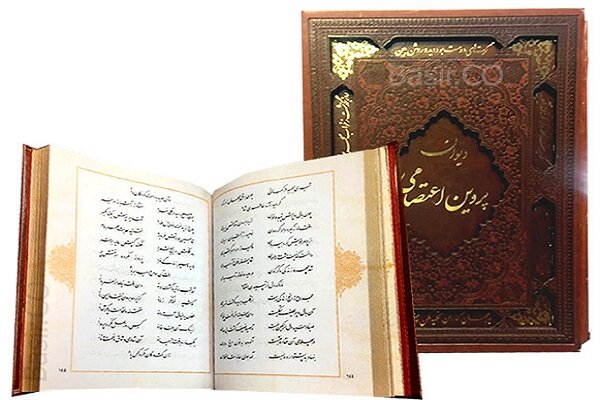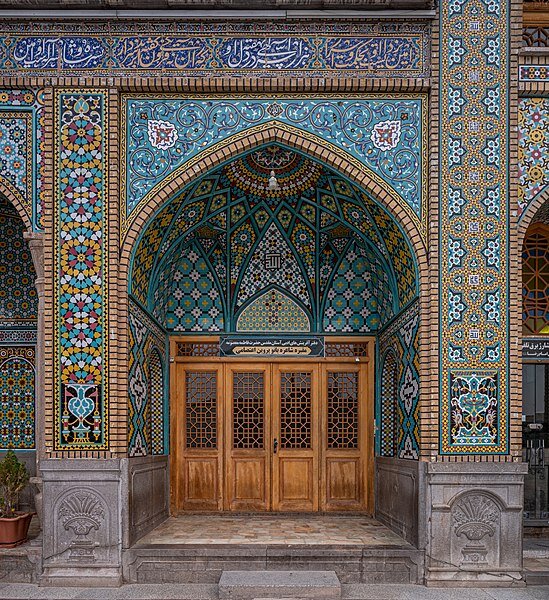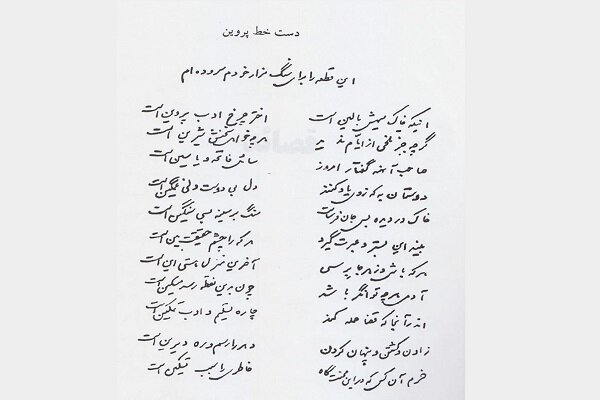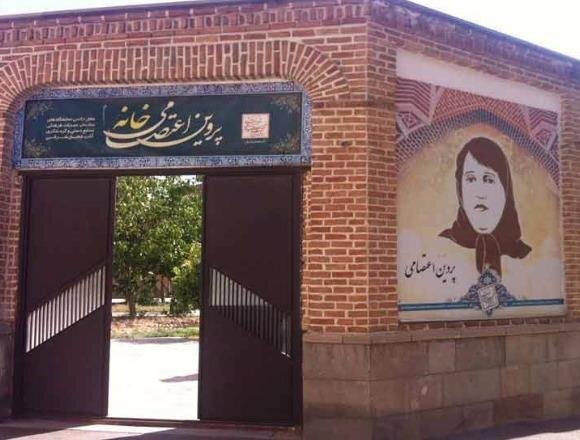Parvin Etesami; Shining jewel in Persian literature’s history

Rakhshandeh Etesami who is known as Parvin Etesami is the most famous female poet in Iran was born on March 17, 1907, in Tabriz. She was the daughter of Yousef Etesami Ashtiani (Etesam-al-Molk), a contemporary Iranian writer and translator and Akhtar al-Muluk Etesami. Parvin was the last child in the family and had three older brothers, Abul-Hassan, Abul-Fath and Abul-Nasr.
Yousef Etesami was elected as the representative of the people of Tabriz in the National Assembly. Therefore, Parvin had to move to Tehran with her family early in her life.
As a child, Parvin became acquainted with constitutionalists and cultural figures and learned literature with his father and with masters such as Ali-Akbar Dehkhoda and Malek osh-Sho’ara Bahar (Mohammad-Taqi Bahar).
In addition to formal schooling at the American Girls College in Tehran and graduating in 1924 from the Iran Bethel School, Parvin learned Persian and Arabic from her father. She excelled as a student throughout her school years and even taught English language and literature at the same school. Parvin also wrote poems while studying.
For her graduation, she wrote the poem ‘A Twig of a Wish’ about the struggles facing Iranian women and the need for their education.
Parvin married her father’s cousin Fazlollah Etesami on July 10, 1934, and moved to Kermanshah with her husband four months after her marriage. Parvin’s husband was a police officer and when she married him, he was the police chief in Kermanshah. But the marriage only lasted for ten weeks due to spiritual and moral differences and she returned to Tehran. Her husband’s military spirit was completely contrary to Parvin’s poetic and gentle spirit, and this was the reason for Parvin’s separation from her husband.

Before Parvin’s marriage, her father was opposed to the publication of her poems, considering it inappropriate given the circumstances and culture of the time. But after Parvin got married and separated from her husband, her father agreed to do so.
The first edition of her Diwan (book of poetry) consisted of 156 poems and appeared in 1935. After the publication of the first edition of her Diwan, she worked for several months at the library of Danesh-Saraay-e ‘Aali, today’s the Tarbiat Moallem University of Tehran in 1938-39.
During the life of Parvin Etesami, the government awarded scientists, scholars and great men of science and literature with medals of merit or state medals; A medal that is a sign of gratitude and respect from the government for the scientific and cultural services of the person in question.
In 1936, Parvin was awarded a 3rd degree Medal of Art and Culture but she did not accept this medal. She did not even accept Reza Shah Pahlavi’s offer to become the tutor of the Queen and Crown Prince.

The death of her father in 1938 at the age of 63 depressed her greatly and she died only three years later. She died on 5 April 1941 at the age of 34 from Typhoid fever in Tehran and was buried near her father in Qom, near the Hazarat Fatimah al-Masumah shrine.
The second edition of her book, edited by her brother Fath Etesami, appeared shortly after her death in 1941. It consisted of 209 different compositions in Mathnawi, Qasida, Ghazal, and Qet’a (another form of Persian poetry), and stanzaic forms. It totaled 5606 distiches.
During Parvin’s life, factors such as her father, her father’s friends, the American school and, most importantly, the political and then social developments in Iranian society, had influenced Parvin’s personality and thought.
Parvin was acquainted with Western classical literature due to the job of her father Yousef Etesami as a political figure. Literary meetings in which Yousef Etesami participated played an important role in shaping Parvin’s political views. Parvin’s presence at Iran Bethel School also made her familiar with Western ideas and women’s issues in the West.
Her poetry follows the classical Persian tradition in its form and substance, in perhaps a deliberate defiance in the face of the modernistic trends in Persian poetry that were becoming popular in her time.

Parvin’s poems include issues such as oppression, anti-poverty, justice and idealism. Her poetry expressed the pain of poverty and exploitation and called on the masses to revolt against transgressors. Her poetry articulated the social discord of her time and posited that the eternal war between good and evil is a product of the human mind. Many of Parvin’s poems express her criticism of kings and the tyranny of the powerful. Many of Parvin’s poems have narrative content in which Parvin brings the debate between two things in the form of a story.
One of her most famous poems is “The Orphan’s Tear”. In the story of this poem, an old woman is watching the king pass by.
Here are some lines from her poem ‘The Orphan’s Tear’:
“From every street and roof rose joyous shouts;
The king that day was passing through the town
An orphan boy amidst this speaks his doubts,
What is that sparkle that’s atop his crown?
Someone replied: that’s not for us to know,
But it’s a priceless thing, that’s clear!
A crone approached, her twisted back bent low,
She said: that’s your heart’s blood and my eye’s tear!
We were deceived by shepherd’s staff and robe
He is a wolf; for many years he’s known the flock.
The saint who craves control is but a rogue
A beggar is a king who robs his flock.
Upon the orphan’s tears keep fixed your gaze.
‘Til you see from where comes the jewel’s glow.
How can straight talk help those of crooked ways?
And frank words will to most folk deal a blow.”

On the occasion of Parvin’s birthday, the 25th day of Esfand, the twelfth month on the Iranian calendar, which fell on March 16 this year, has been designated as ‘Parvin Etesami Commemoration Day’ to commemorate the most famous female poet of Iran.
Parvin Etesami’s House in Tabriz which is registered as one of Iran’s Cultural Heritage has an area of more than 1300 meters square. It is the permanent center of art galleries and exhibitions in East Azerbaijan province. This house was built in the Pahlavi era. Parvin lived in this house until she was seven.
MNA/
source: en.mehrnews.com





